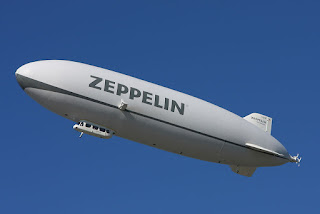- Munk invents realistic wind simulation
Monday, November 23, 2020
Wind Tunnel (1923)
Autogyro (1923)
- De la Cierva paves the way for vertical flight.
Juan de la Cierva Auto Guro - ModelPowered Airplane (1903)
- The Wright brothers build the first winged aircraft capable of sustained flight
Sunday, November 22, 2020
Wright Brothers
The Wright brothers, Orville (August 19, 1871 - January 30,1948) and Wilbur (April 16, 1867 - May 30, 1912), were two American brothers, inventors, and aviation pioneers who are credited with inventing and building the world's the first successful airplane and making the first controlled, powered and sustained heavier-than-air human flight, on December 17, 1903. From 1905 to 1907, the brothers developed their flying machine into the first practical fixed-wing aircraft. Although not the first to build and fly experimental aircraft, the Wright brothers were the first to invent aircraft controls that made the fixed-wing powered flight possible
Airship (1852)
Glider (1804)
- Cayley boosts the quests for a flying machine
Born into a wealthy family in Yorkshire, northern England, George Cayley (1773 - 1857) was a prolific inventor with an interest in human flight. He devised a heavier-than-air flying machine, with a wing to provide lift, a fuselage in which a pilot could sit, and a cruciform tail for balance and control. In 1804 he built a glider based on this design with a kite for a wing and a pole some 5 feet (1.5m) long as the fuselage. This seems to have flown down slopes unmanned, with varying weights of ballast onboard, although Cayley recorded that in later experiments with similar but larger gliders a man running into "a gentle breeze" had found himself lifted off the ground "for several yards."
"We shall be able to transport ourselves and families . . . More securely by air than by water." - George Cayley, "On Aerial Navigation 1809 - 10"
The originality of Cayley's design lay in abandoning flapping as a means of propulsion. It had previously been assumed that a human would fly like a bird. But Cayley, having defined flight in terms of lift, drag, and thrust, confined the wing to providing lift. But having given up flapping, Cayley lacked an alternative power source to provide thrust. He later built a glider, which, in 1853, led to the first sustained manned glider flight. The powered flight, however, had to wait for another half-century for the petrol engine and the Wright Brothers.
- This reconstruction of the man-carrying glider Cayley flew in 1853 was built in 1973 by Anglia TV in England
Parachute (1783)
Hot - Air - Balloon (1783)
King Louis XVI and Queen Marie Antoinette witnessed the first passenger-carrying air flight - albeit with a sheep, a Duck, and a rooster in the basket of the balloon. The eight-minute flight saw the Montgolfiers creation rise to a height of 1,500 feet (460 m) before running out of fuel and landing safely 2 miles (3.2 Km) distant.











































